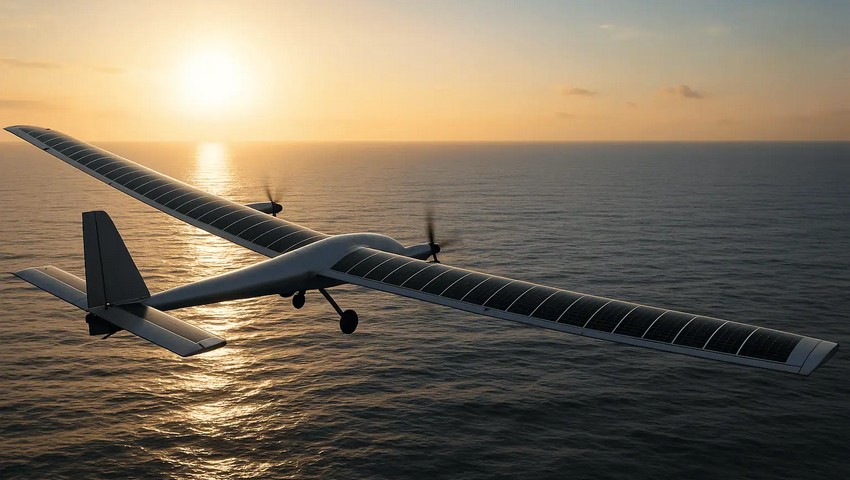
Skydweller: 90 days in the sky without landing
U.S. aerospace startup Skydweller Aero, in partnership with French defense giant Thales, has unveiled Skydweller – an autonomous, solar-powered drone capable of staying airborne for up to 90 days without landing.
Designed for long-range maritime and terrestrial surveillance, Skydweller is more than just a drone – it's a pseudo-satellite capable of persistent observation, data collection, and real-time analysis. With plans to push the limits toward perpetual flight, Skydweller could transform how governments, humanitarian groups, and industries monitor Earth from above.
Skydweller’s sheer scale is striking. Its 72-meters wingspan is longer than that of a Boeing 747, yet it weighs just 2.5 tons, making it approximately 160 times lighter than a fully loaded jumbo jet. The drone is constructed from lightweight carbon fiber and powered by over 17,000 solar cells covering 270 square meters of wing surface. In optimal conditions, the system can generate up to 100 kilowatts of power, which feeds its propulsion and charges more than 635 kilos of batteries for night flight.
Its operational altitude ranges from 7,500 to 10,500 meters, with daytime peaks 13,600 meters to maximize solar intake and nighttime descents to conserve energy.
Skydweller is designed to function in challenging mid-altitudes, an environment where many previous solar-powered aircraft failed due to turbulence. To counter this, it incorporates gust-load alleviation software and a quadruple-redundant flight control system, ensuring mission continuity even if individual subsystems fail.
Even more impressive is its self-healing vehicle management system (VMS). If a piece of code fails mid-flight, it is automatically diagnosed, corrected, and rebooted – allowing the aircraft to maintain full autonomy and reliability across multi-month missions.
At the heart of Skydweller’s surveillance capabilities is AI-powered radar, an X-band system with a range of 200 kilometers. It can track thousands of air and sea targets simultaneously while autonomously classifying threats using artificial intelligence. By processing data onboard, the drone minimizes bandwidth usage and reduces the need for constant human oversight.
This makes it especially effective for gray-zone conflict monitoring, anti-piracy patrols, illegal trade detection, and coastal surveillance in volatile regions such as the Mediterranean, Indo-Pacific, and Atlantic corridors.
Skydweller has already completed a series of autonomous test missions, including 22.5-hour flights through hurricane-prone Gulf Coast skies in 2024. These tests validated its weather-avoidance systems and its ability to withstand rapidly shifting conditions, critical for operations in regions like Southeast Asia or the Caribbean.
With its operational range spanning 40 degrees north and south of the Equator, and potential seasonal use in polar areas, Skydweller is poised to cover vast portions of the globe. While initial focus lies in defense and intelligence, Skydweller’s creators envision broader applications – from disaster response and oil spill detection to climate research and border patrol.
Skydweller’s vision aligns with innovations driven by QuData and our advanced autonomous UAV technologies. QuData’s systems are engineered to excel in GPS-denied and complex environments – whether navigating dense urban areas, rugged coastlines, or rapidly changing weather conditions. By combining AI-driven targeting, sensor fusion, and precision navigation, QuData enables drones to operate with exceptional reliability and autonomy across diverse missions.
Together, efforts from companies like Skydweller Aero or QuData mark a turning point in the future of aerial operations – moving beyond traditional aviation toward systems that fly smarter, and longer than ever before.
